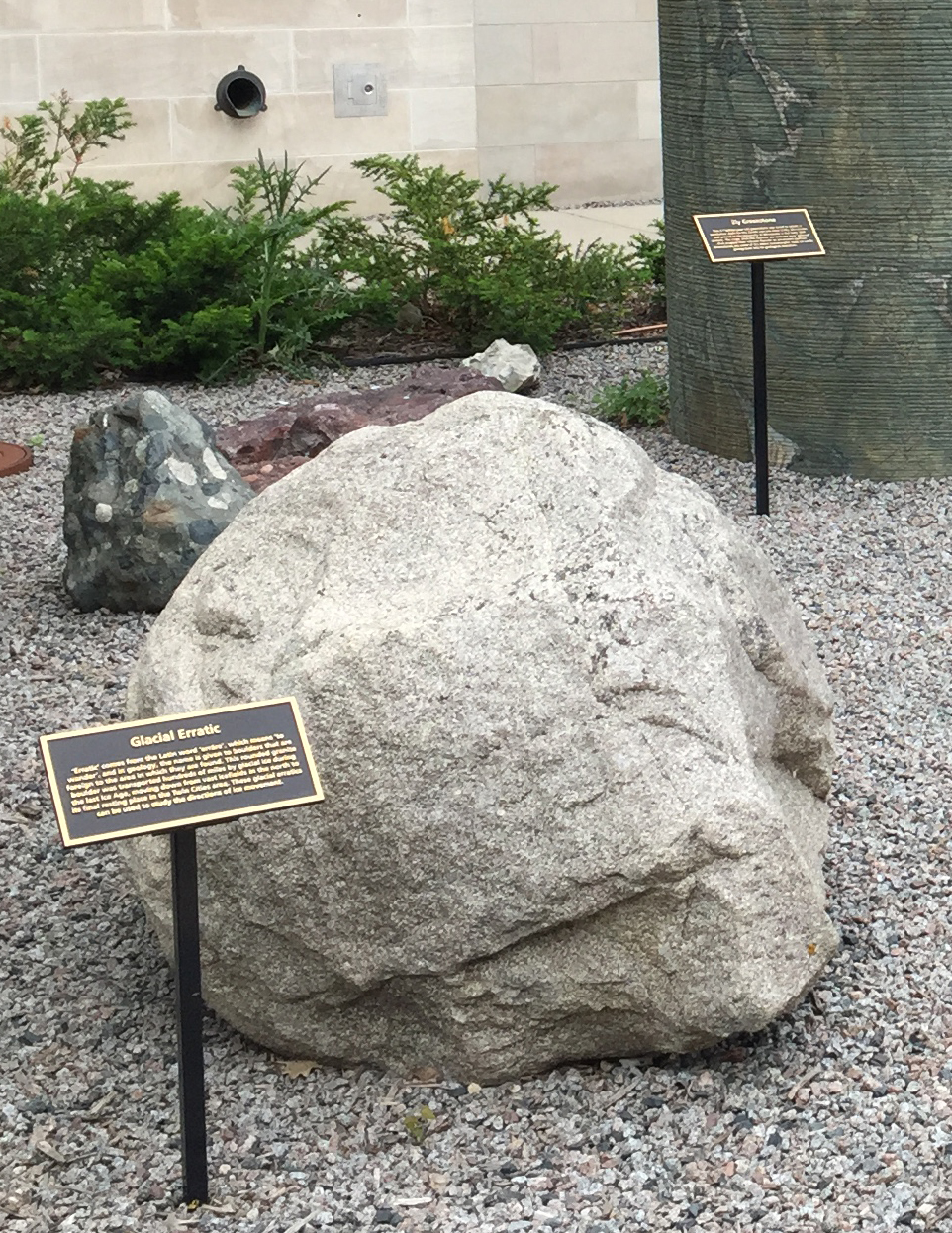
This glacial erratic is a reminder of a time when mammoths and mastodons roamed Minnesota, living south of an immense ice sheet whose margin at times stretched completely across our campus.
‘Erratic’ comes from the Latin for ‘wanderer’ and is a term used for boulders composed of rock that is foreign to the area in which the boulders are found. Granite bedrock similar to this boulder does not occur anywhere within the Twin Cities region. Hence, this boulder, locally found, must have been moved here. Although the rock lacks any unique characteristic to identify its source, it is similar to granites just north of Minnesota’s Iron Range. If that is indeed its source area, glacial ice transported the boulder nearly 350 km (200 miles). Out-of-place erractics are scattered across northern landscapes and historically their anomalous nature led to the recognition that vast ice sheets recently covered much of the northern continents.
While water transport rounds boulders and sediment, ice is much more viscous, so ice transport is distinctive from water. Ice can carry much larger grains than water does, and this erratic is quite small compared to many found across Minnesota. Yet moving ice cannot round grains as effectively as flowing water. Which raises the question of how this boulder became so well rounded?
Our erratic most likely began as a ‘corestone’ (or as they are sometimes more poetically called, a ‘woolsack’) that was the product of chemical weathering of fractured bedrock. Granites (and other bedrock) often fracture and groundwater moving along fracture boundaries will preferentially chemically weather the angles where fractures meet, because of the greater surface area at those junctures. Hence, this chemical weathering rounds broken blocks of fractured rock in place. If an ice sheet later passes over exposed, fractured bedrock that underwent spheroidal chemical weathering, the ice can then pick up and transport the rounded corestones hundreds of kilometers. Hence our erratic was already rounded by chemical weathering of exposed fractured granite bedrock long before it was transported, rather than being rounded during transport.